- 1【iOS开发】—— GCD_ios开发 gcd
- 2mysql与oracle九大区别,MySQL与Oracle的主要区别
- 3硬件产品经理:电子产品加工成本
- 4Fink CDC数据同步(四)Mysql数据同步到Kafka_flink cdc mysql to kafka
- 5基于java的超市管理系统设计与实现_基于java商场购物管理系统设计与实现
- 6软件测试行业现状浅析_软件测试工具领域行业竞争
- 7等保2.0 测评 linux服务器加固 基本安全配置手册_等保2.0测评 linux服务器加固 基本安全配置手册
- 8LLM:finetune预训练语言模型_chinese-roberta-wwm-ext-large were not used when i
- 9FPGA实现SDRAM接口--汇总导航_sdram页突发
- 10【Python】成功解决ValueError: dictionary update sequence element #0 has length 1; 2 is required】
python数据分析-糖尿病数据集数据分析预测
赞
踩
一、研究背景和意义
糖尿病是美国最普遍的慢性病之一,每年影响数百万美国人,并对经济造成重大的经济负担。糖尿病是一种严重的慢性疾病,其中个体失去有效调节血液中葡萄糖水平的能力,并可能导致生活质量和预期寿命下降。。。。
本案例分析针对糖尿病数据集进行探索和分析:
二、实证分析
首先,导入需要的基础包:
- import numpy as np
- import pandas as pd
- import matplotlib.pyplot as plt
- %matplotlib inline
- plt.rcParams['font.sans-serif'] = ['KaiTi'] #中文
- plt.rcParams['axes.unicode_minus'] = False #负号
-
-
- import seaborn as sns
读取数据文件
- ###读取文件数据
- df=pd.read_csv('data.csv')
- ###展示数据前15行
- df.head(15)

###各项特征名称
年龄:13级年龄组(_AGEG5YR见密码本)
1 = 18-24 / 2 = 25-29 / 3 = 30-34 / 4 = 35-39 / 5 = 40-44 / 6 = 45-49 / 7 = 50-54 / 8 = 55-59 / 9 = 60-64 / 10 = 65-69 / 11 = 70-74 / 12 = 75-79 / 13 = 80 岁或以上
Sex:患者性别(1:男;0:女)
HighChol:0 = 无高胆固醇 1 = 高胆固醇
CholCheck:0 = 5 年内未进行胆固醇检查 1 = 5 年内进行了胆固醇检查
BMI:身体质量指数
吸烟者:您一生中至少吸过 100 支香烟吗? [注:5 包 = 100 支香烟] 0 = 否 1 = 是
心脏病或发作:冠心病 (CHD) 或心肌梗塞 (MI) 0 = 否 1 = 是
PhysActivity:过去 30 天的身体活动 - 不包括工作 0 = 否 1 = 是
水果:每天吃水果 1 次或更多次 0 = 否 1 = 是
蔬菜:每天吃蔬菜 1 次或更多次 0 = 否 1 = 是
HvyAlcoholConsump:(成年男性每周 >=14 杯,成年女性每周 >=7 杯)0 = 否 1 = 是
GenHlth:总体而言,您的健康状况是: 等级 1-5 1 = 极好 2 = 非常好 3 = 好 4 = 一般 5 = 差
MentHlth:心理健康状况不佳的天数 1-30 天
PhysHlth:过去 30 天的身体疾病或受伤天数 1-30
DiffWalk:你走路或爬楼梯有严重困难吗? 0 = 否 1 = 是
中风:您曾经中风。 0 = 否,1 = 是
HighBP:0 = 不高,BP 1 = 高 BP
糖尿病:0 = 无糖尿病,1 = 糖尿病
发现数据量为七万多行,17个特征
查看数据类型和形状
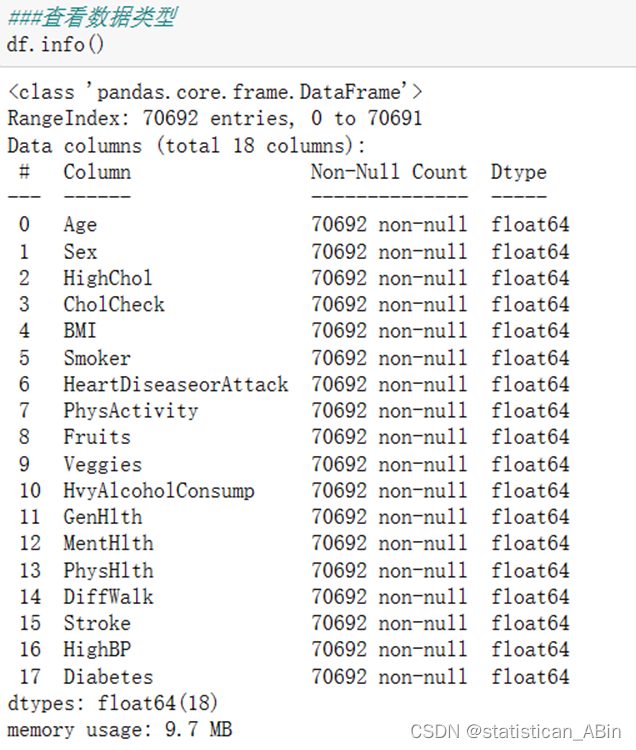
接下来进行基本的统计性描述分析

从上面结果可以看出,从描述中,我们观察到BMI,PhysHlth,MentHlth的标准差高于1,
最大值和最小值之间的差异相对较高
下来查看缺失值
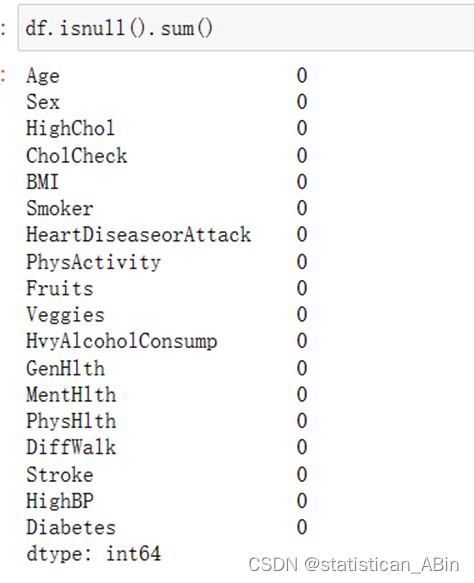
数据比较完整,无缺失值,若有的话可以可视化一下:
- #观察缺失值可视化
- import missingno as msno
- msno.matrix(df)
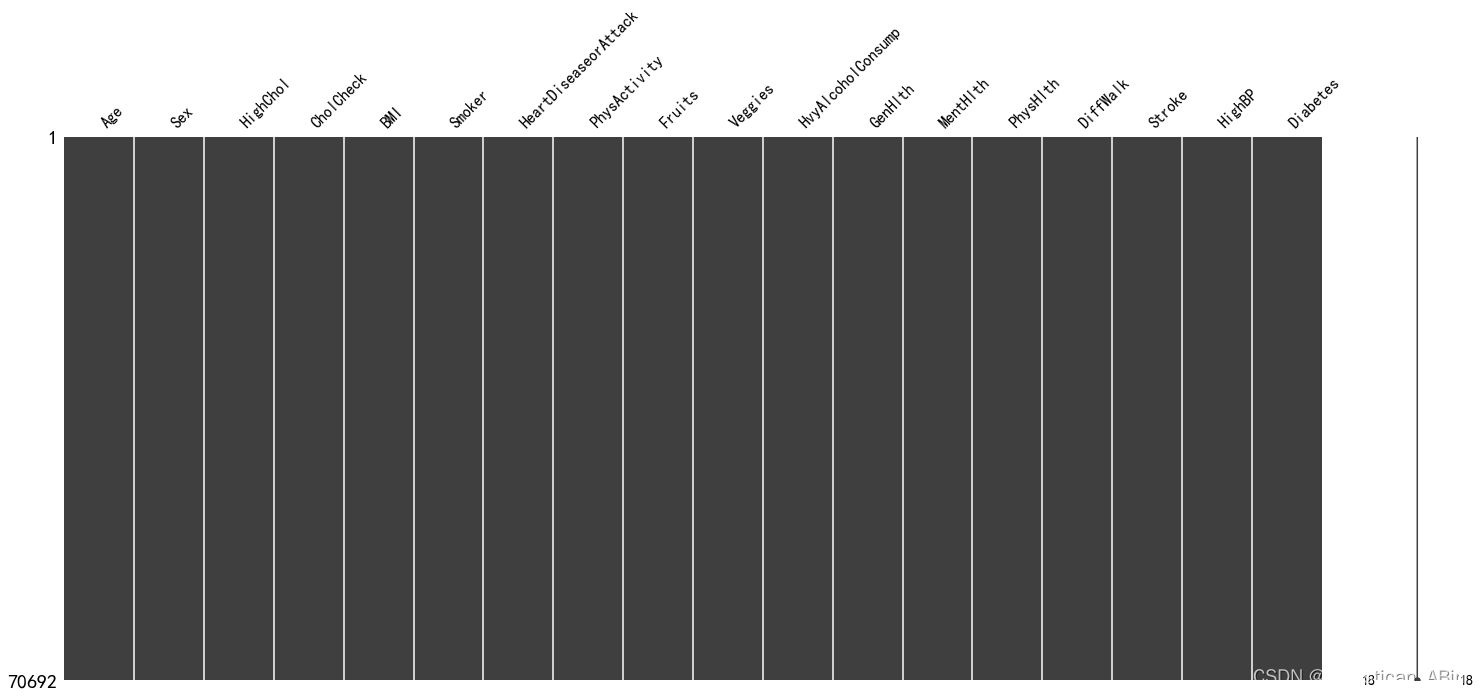
对特征分别进行可视化一下 比如各个特征的占比情况等等
- import seaborn as sb
- for i in df.columns:
- fig, ax = plt.subplots(1,1, figsize=(15, 6))
- sb.countplot(y = df[i],data=df, order=df[i].value_counts().index)
- plt.ylabel(i)
- plt.yticks(fontsize=13)
- plt.show()
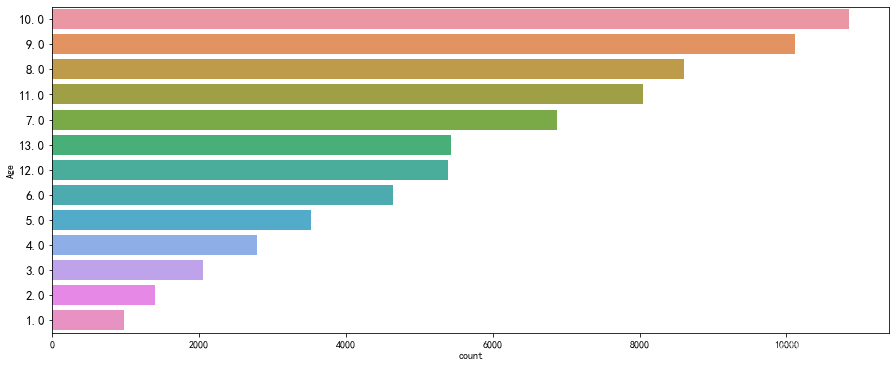
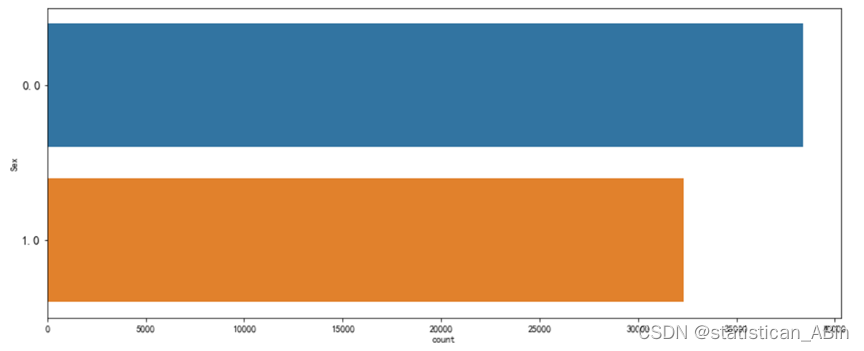
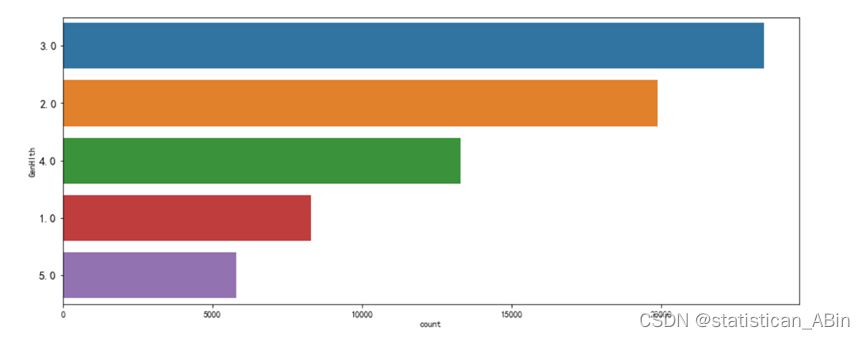
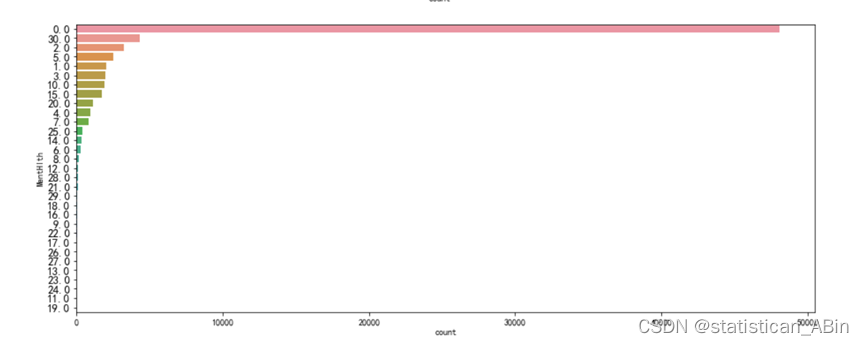
- # 按性别分组,计算平均年龄和BMI
- grouped = df.groupby('Sex')[['Age', 'BMI']].mean()
- grouped['BMI'].plot(kind='bar')
- plt.title('Average BMI by Gender')
- plt.xlabel('Gender')
- plt.ylabel('Average BMI')
- plt.show()

接下来看一下特征之间的相关系数
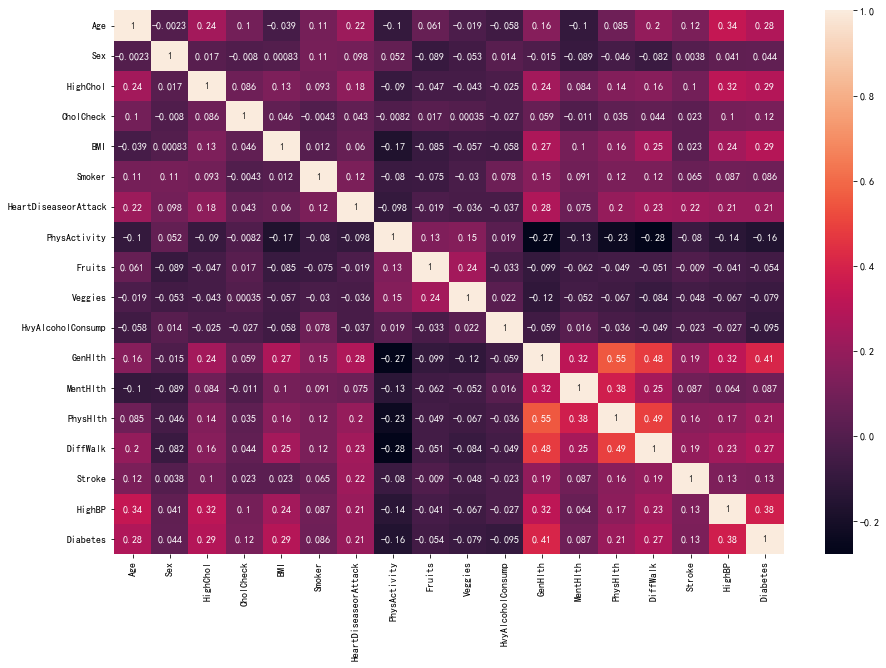
从上面热力图可以看出,最大相关性在0.38左右
再画出具体特征的分布
sb.barplot(x=df['Diabetes'],y=df['HighBP'],color='red') 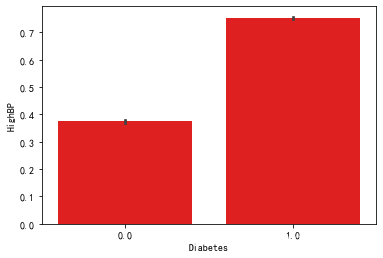
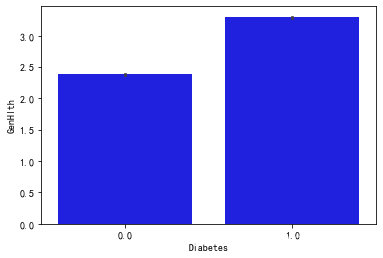
下来用直方图表示
- df.hist(figsize=(20,20))
- plt.show()
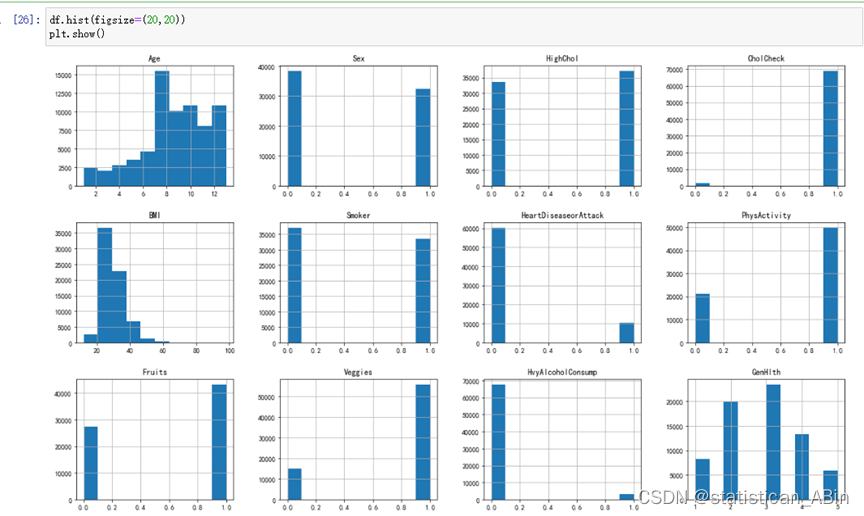 分别画出响应变量糖尿病与其他特征的关系
分别画出响应变量糖尿病与其他特征的关系
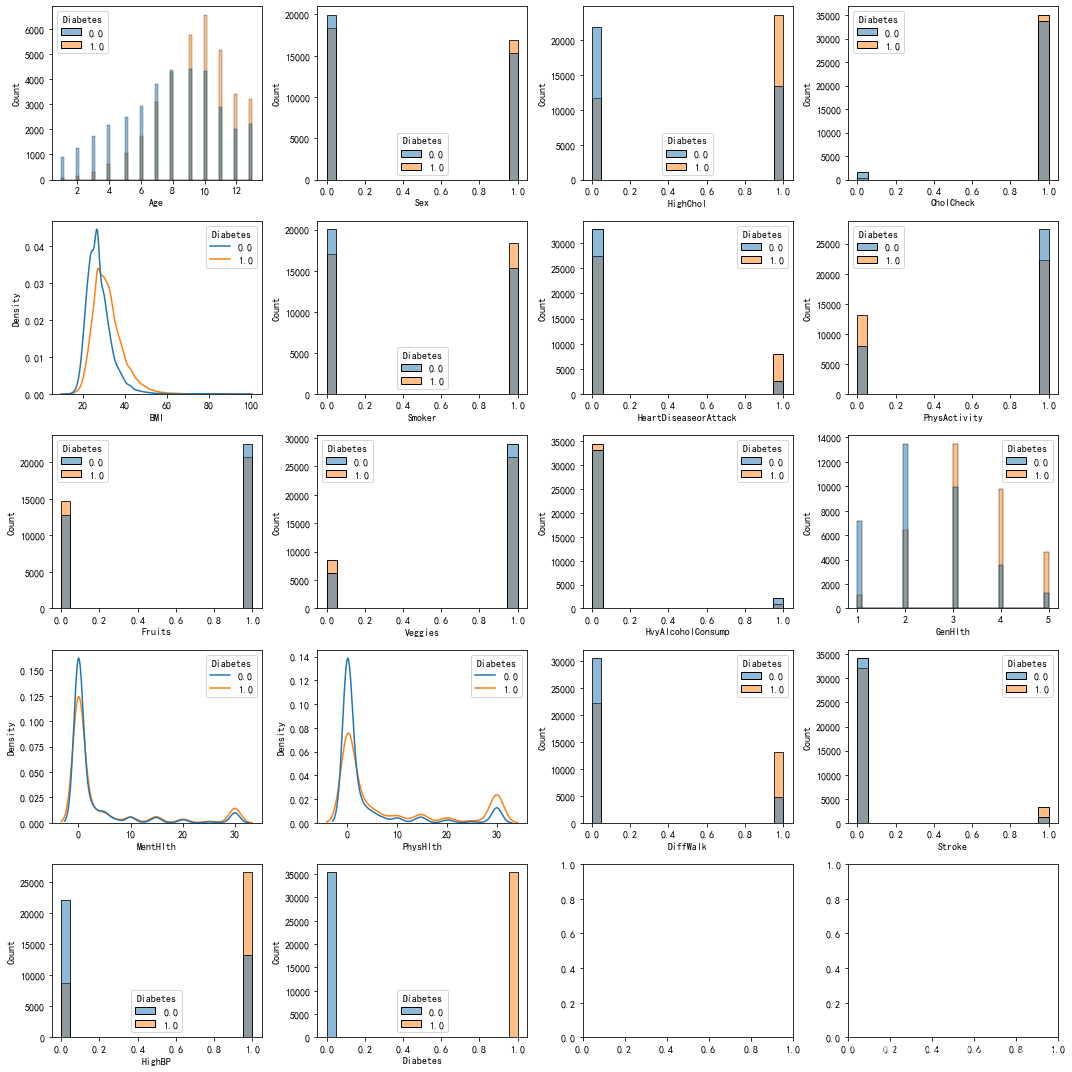
接下来看一下糖尿病分布
- plt.figure(figsize=(12,5))
- sns.displot(x='PhysHlth', col='Diabetes' , data = df, kind="kde" ,color = 'pink')
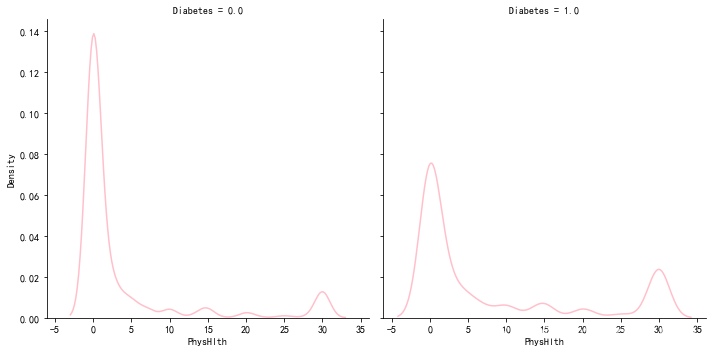
接下来进行标准化
- df1 = df
- cols = ['BMI', 'PhysHlth']
- for i in cols:
- df1[i] = (df1[i] - df1[i].min()) / (df1[i].max() - df1[i].min())
下面开始机器学习部分
- ####划分训练集和验证集
- from sklearn.model_selection import train_test_split
- from sklearn.preprocessing import StandardScaler
- print('Non normalized dataset')
- x_train, x_test, y_train, y_test= train_test_split(x,y,test_size=0.25,random_state=101)
- print('Training: ', x_train.shape[0])
- print('Test: ', x_test.shape[0])
- st_x= StandardScaler()
- x_train= st_x.fit_transform(x_train)
- x_test= st_x.transform(x_test)
-
- print('Normalized dataset')
- x_train1, x_test1, y_train1, y_test1 = train_test_split(x1,y1,test_size=0.25,random_state=101)
- print('Training: ', x_train1.shape[0])
- print('Test: ', x_test1.shape[0])
- from sklearn.neighbors import KNeighborsClassifier
- import time
- from sklearn.metrics import accuracy_score, confusion_matrix, classification_report
-
- exec = []
- exec1 = []
- st = time.time()
- knn = KNeighborsClassifier(n_neighbors=5)
-
- knn.fit(x_train, y_train)
- accuracy = []
- accuracy1 = []
-
- y_pred = knn.predict(x_test)
-
- cm = confusion_matrix(y_test, y_pred)
- print(cm)
- print('\n')
- print(classification_report(y_test,y_pred))
- print(accuracy_score(y_test, y_pred))
- accuracy.append(accuracy_score(y_test, y_pred))
- exec.append(time.time() - st)
-
- print('\n\nNormalized DataSet')
- st = time.time()
-
- knn.fit(x_train1, y_train1)

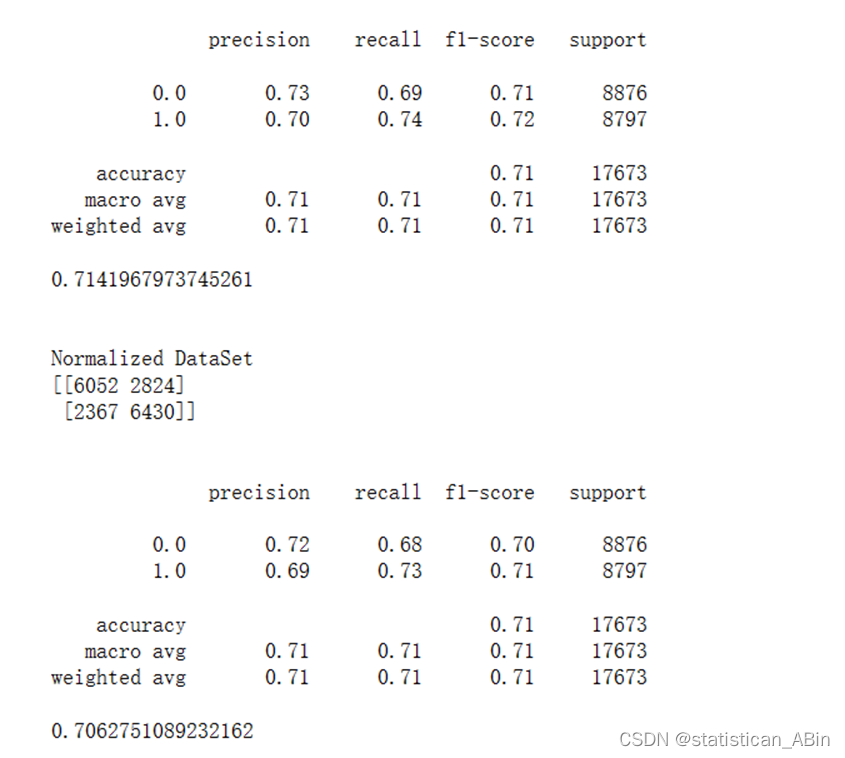
使用其他模型试一下,最终结果如下
- #决策树
- from sklearn.tree import DecisionTreeClassifier
- model = DecisionTreeClassifier()
- model.fit(x_train, y_train)
- model.score(x_test, y_test)

从以上结果可以看出,自适应提升Adaboost模型的效果还可以,达到了0.7486.其次是极端梯度提升,KNN以及最后的决策树。
三、总结
在这个项目中,我运用了机器学习的模型来预测一个人是否患有糖尿病,使用的模型包括自适应提升(AdaBoost)、K最近邻(KNN)和决策树(Decision Tree)等。自适应提升(AdaBoost)是一种集成学习方法.它通过不断迭代调整样本权重,训练出多个弱分类器,最终组合成一个强分类器。通过对不同算法的比较和分析,最终发现自适应提升最优的算法来进行预测,并根据预测结果来制定相应的医疗干预措施,以帮助预防和治疗糖尿病。。
创作不易,希望大家多点赞关注评论!!!(类似代码或报告定制可以私信)




